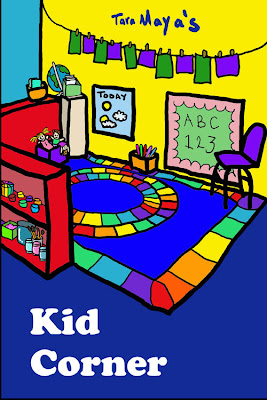What Are The Genres In Children's Literature? - Kid's Corner
Once a week, I'm going to do a Kid's Corner post, devoted to children's literature. Today's question is about how to define genre in Children's Literature. Some people would place Young Adult lit here too, but I think it makes more sense to discuss that with adult fiction, since the crossover in readership and material is profound. When I discuss Children's Lit, I'm talking about books for young children up to Middle Grade.
Children's Lit encompasses the full range of genres that you find in Young Adult and Adult fiction. But the books are shelved by age, not the type of story. That makes sense. These are books for kids at widely divergent stages of reading ability, and catering to the vocabulary and sophistication of the reader is far more important than narrowing selection by interest. Kids are also more open to different genres than older readers. They aren't as quickly bored as teens and aren't as hardened in their tastes as adults.
Unsurprisingly, the division in Children's Literature follows the academic divisions of children's education: Preschool, Elementary and Middle Grade.
Within each of these categories are sub-categories, of course.
Preschool books are usually called Picture Books. They include Baby Board books fashioned from hard cardboard or cloth, so babies can gnaw on them, as well as gorgeously illustrated stories, which might be quite long, with complex vocabulary, that are meant for parents or teachers to read to children. There are also Early Readers, like the Bob Books, First Little Readers or Starfall books, which teach phonics and site words to preschool, kindergarden and first grade children learning to read for themselves.
I'll be rolling out some picture books in this category, the Nearly Naughty Early Readers. They are for kids reading on their own, or parents who want to read to toddlers. In fact, a few are already available, for just $.99 in ebook form and $9.99 in print. Here's one that expands the story behind a favorite swimming lesson song, I Had A Little Turtle, I Named Him Tiny Tim. My six year old is proud he can read this himself, and my two year old loves it because "tiny"Tim keeps getting bigger and bigger... He holds his fingers together, in the "tiny" motion and says, "Tiny!" on the first page. Then, when the turtle is so big the boy is standing on his back, my toddler laughs and says, "Not tiny! Big!" and spreads his hands wide.
Elementary books are also called Chapter Books. My kids favorite series is the Magic Treehouse. I have a series planned for this age range too, because this is the level my oldest son is moving into. The first book is already done and with the illustrator. I'll talk about those more when they are closer to publication.
Finally, we come to the Middle Grade books. These are short novels. If they were adult books, we'd call them novellas, and like novellas, they usually have simpler plots than adult books. But not always. Technically, the Harry Potter series is Middle Grade. I think it's more fair to say that it began Middle Grade and ended as Young Adult. Just compare the complexity, characterization, themes and length of the first book with the seventh. Most authors could not pull that off! Part of J.K. Rowling's magic is that she could.
Kristin Nelson has a great vlog post about the three levels of Middle Grade Literature. You'll notice that she lists the Magic Treehouse books, and Beginning Reader Chapter Books, as the first level of Middle Grade, while I would generally consider those separate. However, it goes to show the crossover between these categories. So much depends on the book...and on the reader.
To recap, she divides Middle Grade into three levels. She's vague about the word counts, but I've added approximations to my summary:
- These books are for kids just learning to read
- Get kids excited about reading
- Teach "fundamentals"
- Grades K-2
- Word Count, 4,000-10,000
2. Level Two: Mid-Level Chapter Books
- Novella length and complexity
- More rounded characters, less obvious "lessons"
- Grades 3-6
- Word Count 10,000-40,000
3. Level 3: Upper Level Middle Grade
- Developed characters
- More sophisticated plots and sub-plots
- Well developed characters, and a larger cast
- Grades 6-8
- Word Count 40,000-70,000


Comments